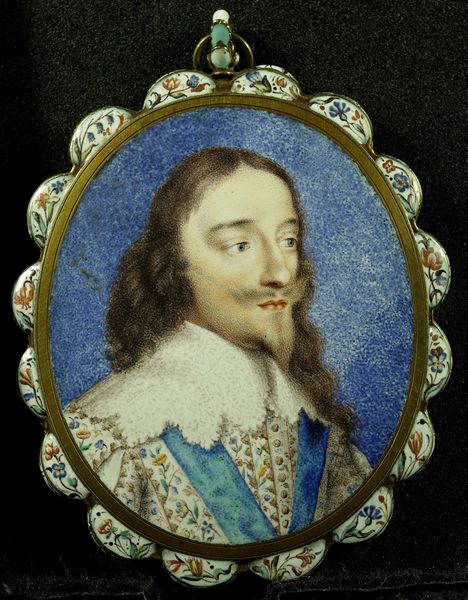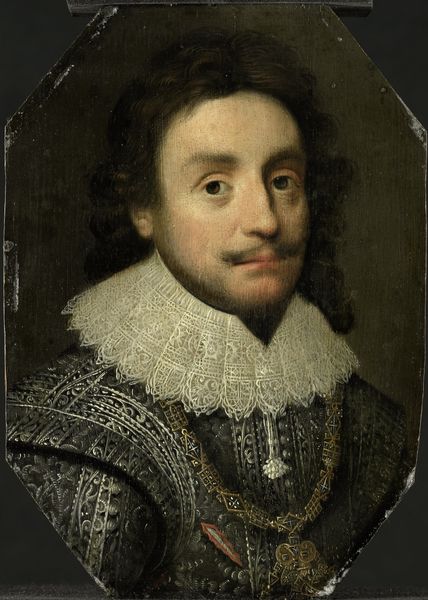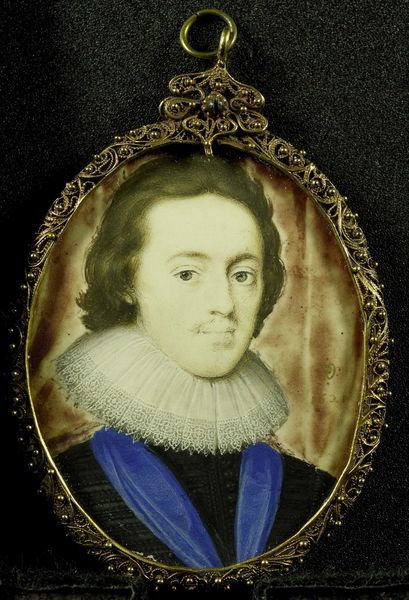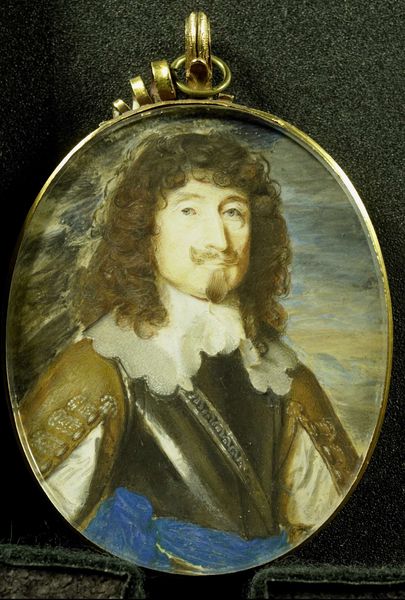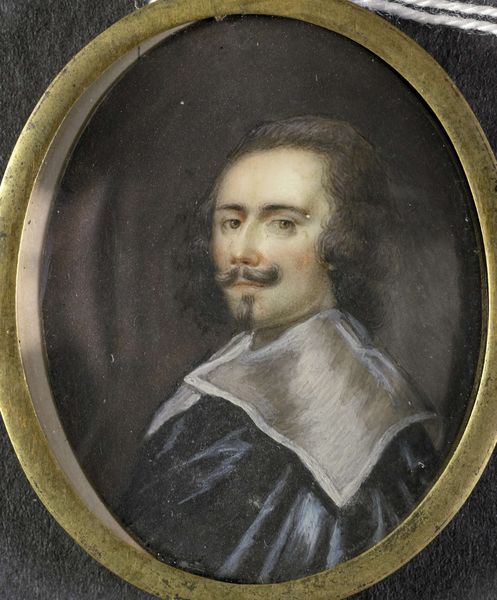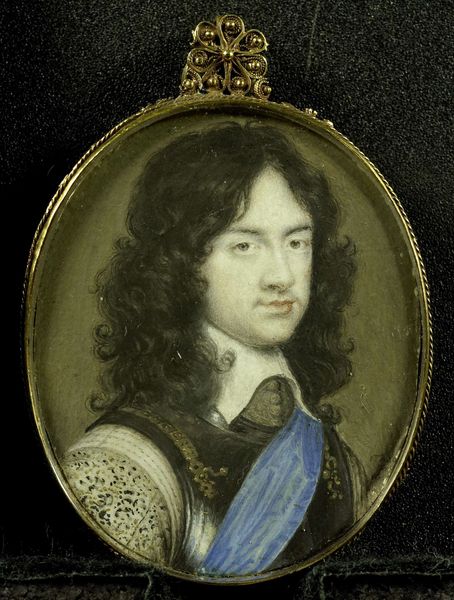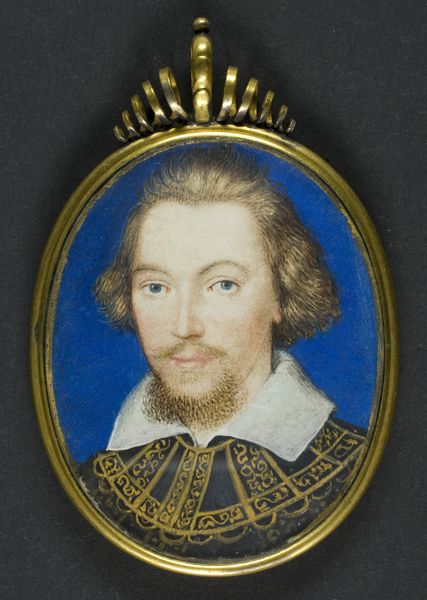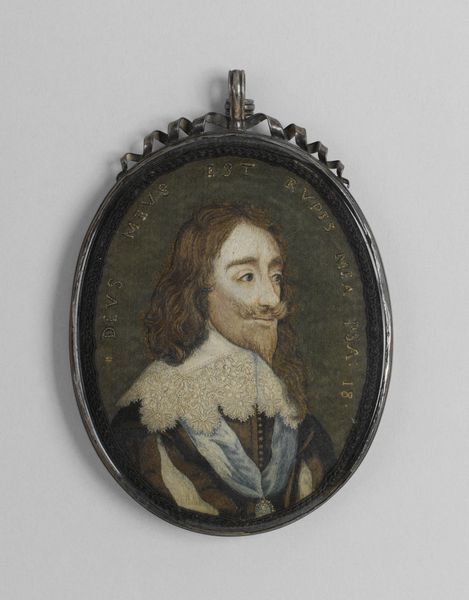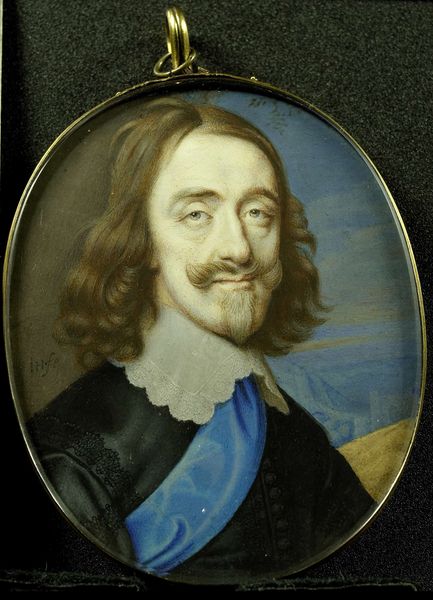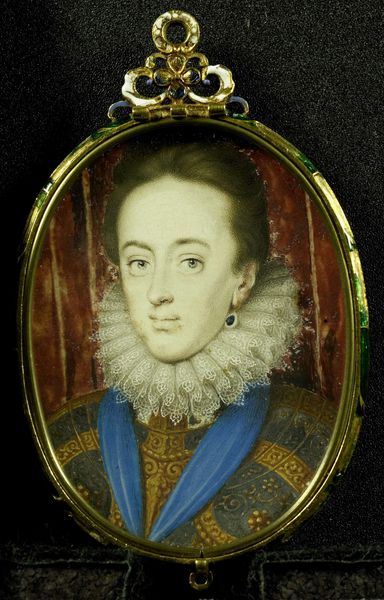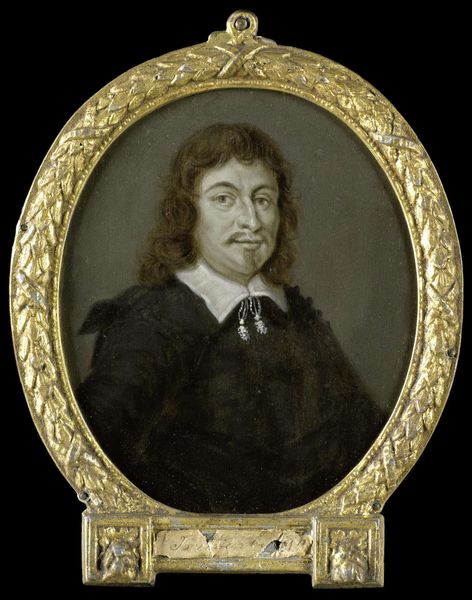
painting, oil-paint
#
portrait
#
baroque
#
painting
#
oil-paint
#
sculpture
#
history-painting
#
miniature
#
realism
Dimensions: height 5.2 cm, width 4.1 cm, height 6.7 cm, width 4.1 cm, depth 0.7 cm
Copyright: Rijks Museum: Open Domain
Editor: Here we have a miniature portrait, "Frederik V," dating from between 1615 and 1647, attributed to Peter Oliver. The detail is really remarkable for something so small, especially in the ruff. What stands out to you? Curator: Well, I'm immediately drawn to the material reality of the piece. Consider the gold frame, likely itself a valuable object. Then the oil paint, so painstakingly applied. These aren’t just aesthetic choices; they reflect the commissioning patron’s wealth and social standing. Can you imagine the labor involved in creating such an intricate object? Editor: I can see that now. The scale feels directly tied to the patron's ability to afford not just the materials, but the artist's time. It's less about spontaneous expression and more about carefully crafted prestige. Curator: Exactly. The realism we see—which, interestingly, is labelled as one of the painting styles–is itself a kind of material effect. The artist uses skill, training, and costly materials to *simulate* reality, further legitimizing Frederik's image and status. Do you think the clothing has something to do with that as well? Editor: Definitely! It seems the opulence displayed through attire such as the detailed ruff and jeweled details contribute significantly to expressing stature. The quality of the materials speaks volumes about both the subject and the person who paid for it. Curator: Think about where this miniature might have been displayed, and to whom. It’s a portable declaration of power, isn't it? Something easily shown as an indication of material wealth, such as being gifted to important alliances. Editor: That's fascinating! I hadn't considered how its function is so deeply rooted in the materiality and implied production. Curator: Indeed, examining the materials, the craftsmanship, and the social context, allows us to deconstruct the supposed mystique around this king and connect it to the concrete realities of production, labor, and power. It shows us the intersection between craftsmanship and fine art. Editor: I will now never see portraiture, or any painting, the same way again! Considering labor and access to materials has definitely made me appreciate all artwork at a deeper level.
Comments
No comments
Be the first to comment and join the conversation on the ultimate creative platform.

